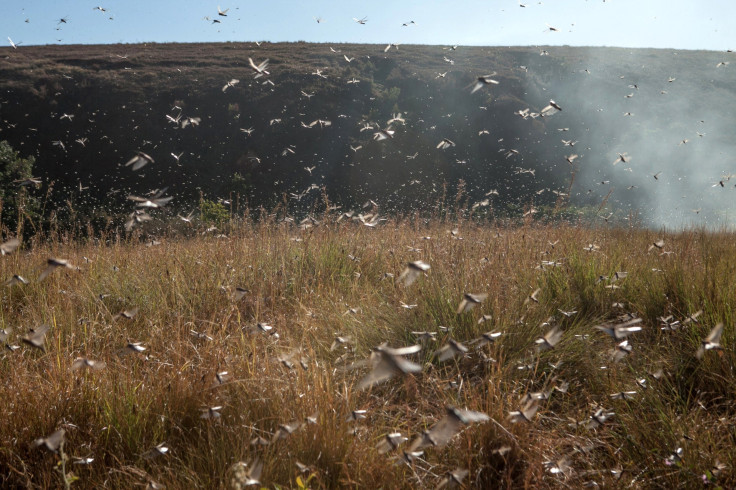Climate Change News: Desert Locusts Threatening East Africa, Worst Swarms In 25 Years

KEY POINTS
- The plague is believed to have originated in Pakistan and crossed into India
- The desert locust is the most destructive of nearly a dozen locust species
- A square kilometer can contain 150 million insects that can consume as much food as 2,500 people
Swarms of desert locusts are ravaging Kenya and other parts of East Africa, threatening the food supply for millions of people in the worst invasion in a quarter century, the U.N. Food and Agriculture Organization warned this week.
The swarms of desert locusts, the most destructive of nearly a dozen locust species, are affecting parts of Somalia, Ethiopia, Sudan, Djibouti and Eritrea. The report said South Sudan and Uganda could be affected next. The plague is believed to have originated in Pakistan and then spread into India. The insects normally are present in the desert areas of 20 countries, stretching across 6 million square miles.
“One immature swarm was 60 kilometers [37 miles] long by 40 km [24 miles] wide,” the FAO said, with each square kilometer containing as many as 150 million insects that can travel as much as 93 miles a day and consume as much food as 2,500 people.
The swarms are so thick, pilots preparing to land an Ethiopian Airlines flight from Djibouti to Dire Dawa Thursday were forced to divert to Addis Ababa, the BBC reported.
<iframe src="https://www.facebook.com/plugins/post.php?href=https%3A%2F%2Fwww.facebook.com%2FAeronewsGlobal%2Fposts%2F2689314674477949&width=500" width="500" height="713" style="border:none;overflow:hidden" scrolling="no" frameborder="0" allowTransparency="true" allow="encrypted-media"></iframe>
The U.N. said some farmers have lost their entire crops in regions where the food supply was damaged by drought and flooding last year. The U.N. estimates losses at more than $2.5 billion.
“There is an unprecedented threat to food security and livelihoods” across the Horn of Africa, the FAO said.
David Mwangi, head of plant protection services at Kenya’s Ministry of Agriculture, told the Guardian planes are spraying pesticides to try to kill the insects that so far primarily have destroyed grazing lands in the northeast.
“So far, they have not gotten to the cropland,” Mwangi said. “We are working hard to prevent them from spreading to food production areas.”
Abdurahman Hussein Ismail, a migratory pest expert and director of the Somaliland environmental and agricultural protection institute, told the Guardian the swarms have laid eggs that already are hatching, setting up another wave that may prove even larger.
In western India, locusts have damaged three quarters of the crops on nearly 62,000 acres of wheat, rapeseed, cumin and potatoes in 285 villages, agriculture officials said. Agriculture Minister R.C. Faldu said farmers will be given compensation of $257 a hectare for the damage.
© Copyright IBTimes 2025. All rights reserved.





















